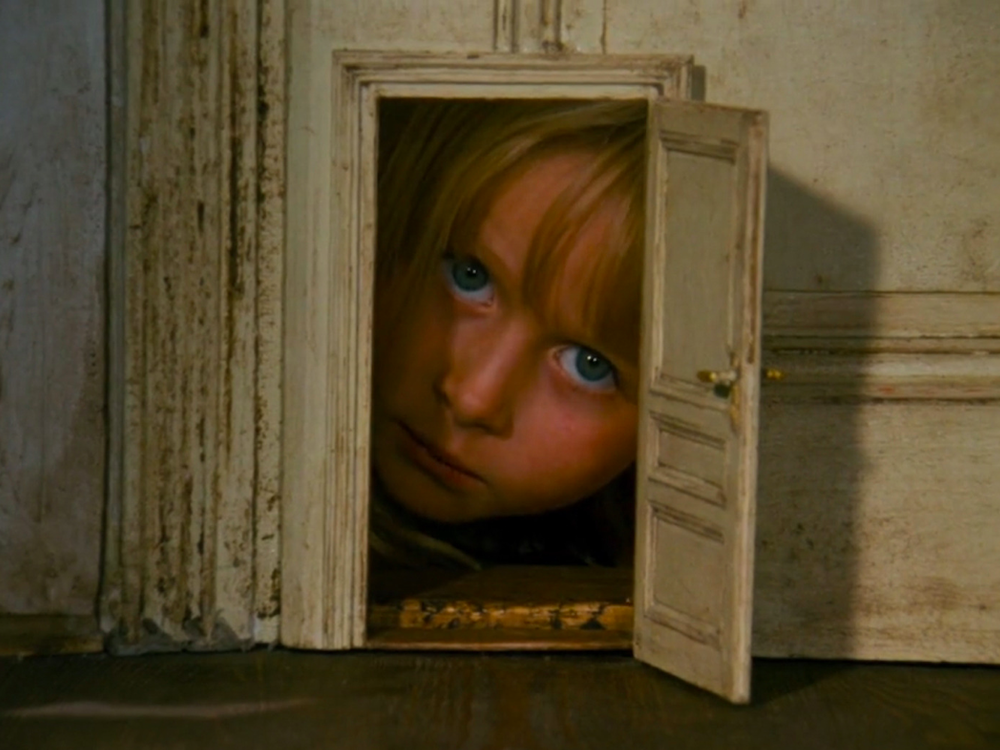
Jan Švankmajer’s surrealistic take on Lewis Carrol’s classic novel Alice’s Adventures in Wonderland (1865), using stop-motion animation and one live actor playing Alice.
You must...
close your eyes.
Otherwise...
you won't see anything.
“I always say I did not close the door of my childhood. Childhood, exactly because of its view of the world, is one of the basic sources of creativity. I constantly try to lead a dialogue with my childhood. I nurture in myself the defiance of childhood. In an adult dictionary the word ‘infantilism’ has a pejorative undertone. I do not take it as such. In the utilitarian pragmatic world infantile immaturity is considered a flaw, but in the imaginative work it is the guarantee of authenticity. Yes, my films are infantile, but that is why they attract young people, who are not yet defeated by domestication.”
Jan Švankmajer1
Mark Stafford and Virginie Sélavy: Is it true that you had a little puppet theatre at home as a child and that this was common in all Czech families? How important has this been for your work?
Jan Švankmajer: Yes, it was quite a common toy. For an introverted child it was an amazing gift. I could use puppets to play out all life’s injustices, correcting them, taking revenge. Puppets have accompanied me throughout my life. It may be that everything I do is just a puppet play.
Alice was your first feature film, why did you choose to start with Lewis Carroll? How important is he as an influence on your work in general?
Alice belongs to my mental morphology. Before I made up my mind to do a feature-length film I was circling around the subject. I made Jabberwocky and Down to the Cellar and only then dared to shoot the whole of Alice. Personally I think that Lewis Carroll’s Alice is one of the most important and amazing books produced by this civilisation.
Although it is not an adaptation, your Alice feels very close to the book, and in particular brings out the sense of menace and aggression that is present in it but is often overlooked in insipid versions such as Disney’s. Was that an important aspect of Carroll’s work for you?
So far all adaptations of Alice (including the latest by Tim Burton) present it as a fairy tale, but Carroll wrote it as a dream. And between a dream and a fairy tale there is a fundamental difference. While a fairy tale has got an educational aspect – it works with the moral of the lifted forefinger (good overcomes evil), dream, as an expression of our unconscious, uncompromisingly pursues the realisation of our most secret wishes without considering rational and moral inhibitions, because it is driven by the principle of pleasure. My Alice is a realised dream.
Jan Švankmajer in conversation with Mark Stafford and Virginie Sélavy.2
“While it is important to point out that Švankmajer is not strictly on the side of the child, neither does he endorse the grown-up view alone; rather, ‘he sees the child (as did Freud) as having a different (or an other) system of wisdom which it is important for us as adults not to lose contact with.’ The child’s wisdom, the child’s logic, is necessary to complement and correct its parental opposite. The child is also capable of evil, but a kind of naive or guileless evil. It can take the form of recalcitrance, senseless destruction, teasing and bullying, and so on. Unlike Disney’s well-behaved Victorian tween, for example, the eponymous character of Švankmajer’s Alice (Kristýna Kohoutová) is morally ambiguous; she’s more nosy than curious, more heedless than brave, more precocious than intelligent. Having no obligations to the marketing department, she is free to be unsympathetic. As a consequence, there is a more palpable sense of danger in Švankmajer’s adaptation than in Disney’s, whose heroine is immunized against harm, it would seem, by virtue of good posture and elocution. Švankmajer’s Alice, by contrast, is bratty and fragile in equal measure, and we aren’t always sure she’ll emerge unscathed from her ordeal. While Disney’s Alice, in the course of her journey, learns to put away childish things and become a young lady – it is the tale of her induction into the grown-up, solar order, the ‘taming of [her] soul’ – Švankmajer’s Alice escapes with her defiance intact. Her last act in the film is to take up a large pair of shears and contemplate the White Rabbit’s decapitation; hers is not a ‘grown-up,’ Christian ethic of forgiveness, but the playground dogma of tit-for-tat.”
Keith Leslie Johnson3

- 1Michael Brook, “Free Radical,” Vertigo Magazine, Spring 2007.
- 2Mark Stafford and Virginie Sélavy, “Interview with Jan Švankmajer,” Electric Sheep Magazine, 14 June, 2011.
- 3Keith Leslie Johnson, Jan Švankmajer (Urbana: Illinois University Press, 2017), 61-62.

